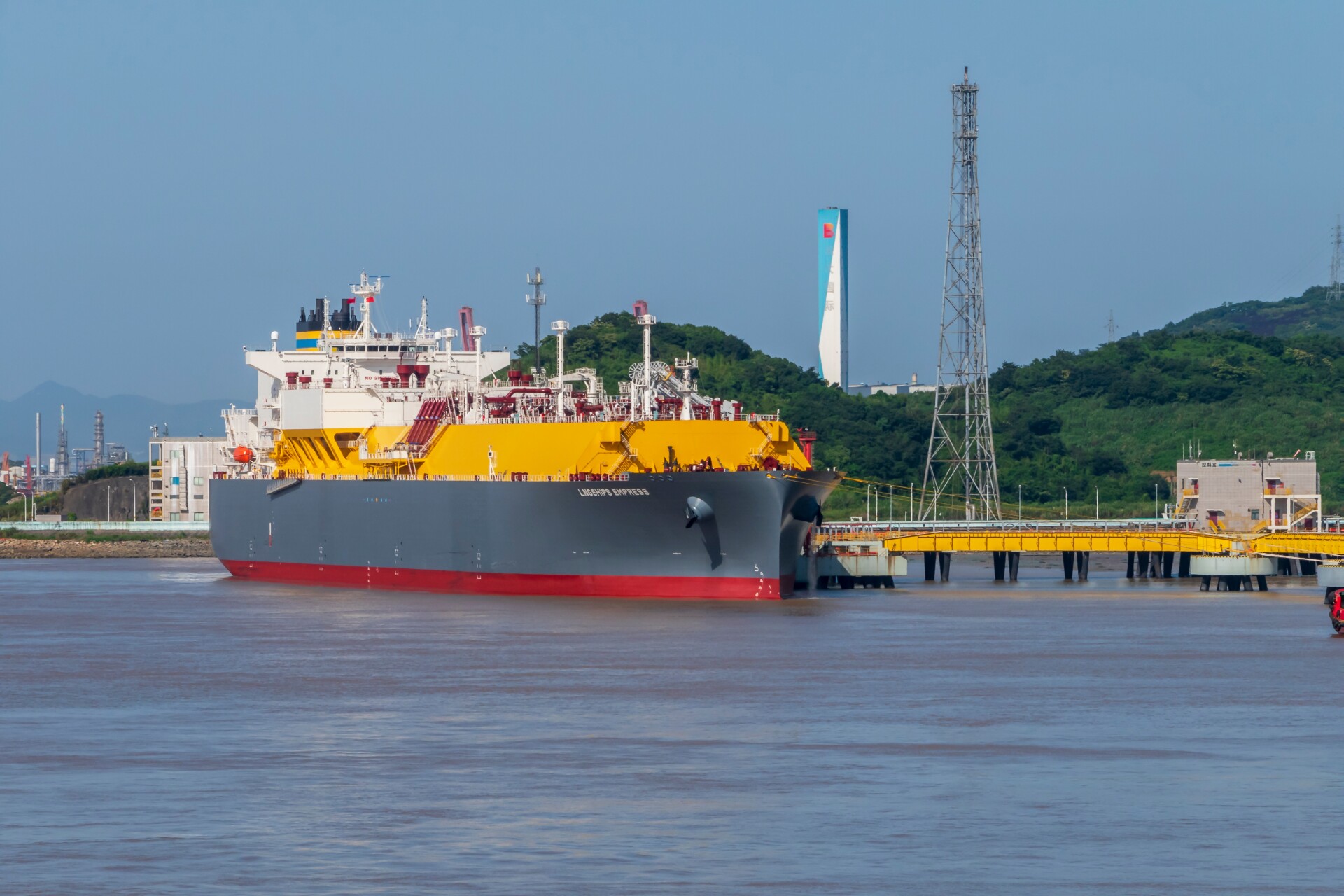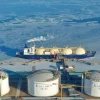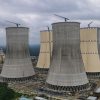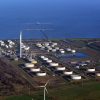China’s long-term outlook for natural gas demand remains bullish despite some short-term uncertainties caused by the country’s economic growth and geopolitical tensions with the US, delegates said at a recent industry conference held in China last week.
Short-term LNG demand, however, remains under pressure from abundant domestic gas output and pipeline imports, in addition to widespread economic uncertainty. Analysts have been downgrading their forecasts for Chinese LNG imports this year, which could potentially see China cede its status as the world’s largest LNG importer.
Longer term, senior Chinese executives still see strong growth for gas demand, but the extent of the increase hinges on how fast gas-fired power capacity catches up with renewables and the affordability of LNG.
“Price and stability of supplies are the most important factors. … If LNG prices are not so high and volatility is not so high, LNG demand will increase, especially in the relatively rich areas in the east and south part of China,” Wang Zhen, the president of state major China National Offshore Oil Corp.’s (CNOOC) research arm, the CNOOC Energy Economic Institute, said at the event.
“LNG has a big potential, but it must work hard,” he noted, adding that China’s solar and wind capacity is growing fast.
China’s gas consumption in 2024 rose by 8% year on year to 426 billion cubic meters, according to China’s National Development and Reform Commission. Demand during the January to March 2025 period fell 2.2% on year to 105.75 Bcm.
Strong Long-Term Gas Demand
Chinese gas demand will reach 620 Bcm in 2035-40, state major Sinopec Chairman Ma Yongsheng said at the conference.
The global natural gas market faces mounting structural challenges that could hamper the fuel’s role in the energy transition. “There are real bottlenecks, and these must be addressed if natural gas is to play its full role in the energy transition,” Ma said in his keynote address at the conference, highlighting geopolitical disruptions, uneven infrastructure development and intensifying competition from renewables.
Infrastructure operator PipeChina President He Zhongwen said at the event that his company estimated Chinese gas demand at 650 Bcm-700 Bcm by 2030-35.
China’s largest gas supplier, China National Petroleum Corp. (CNPC), boosted itspeak demand forecast earlier this year to 620 Bcm-650 Bcm by 2035, compared to the company’s peak demand forecast of 600 Bcm it gave last year.
CNPC said the country’s peak gas demand could rise to 700 Bcm if there is a significant boost to domestic gas production due to technological advances, such as through shale gas developments and coal gasification.
Weaker Short-Term LNG Demand
China’s gas consumption in 2025 is expected to be steady to slightly higher than last year, with the incremental demand met by higher domestic gas production and Russian pipeline gas imports, industry sources say.
China is expected to face a gas supply glut earlier than the international market due to the demand slowdown caused by the US-China trade war and an influx of new contractual supplies, the founder of Chinese consultancy SIA Energy, Li Yao, said at the conference.
“We would have tremendous domestic output growth of between 13 [Bcm]-15 Bcm this year, and pipeline gas imports will grow by 8 Bcm this year,” she said. “They will more than offset the decline in LNG imports.”
China’s LNG imports are forecast to fall to just above 70 million tons this year, compared with 2024’s level of 76.7 million tons, an analyst with a major research house tells Energy Intelligence on the conference sidelines.
The analyst notes this forecast “is a conservative estimate,” as other factors such as the weather or how long the US-China trade war lasts can influence the volumes.
“The outlook for 2026 may not be much stronger as our forecast for LNG spot price is still above $10 per million Btu,” the analyst says.
China’s LNG imports next year could be similar to 2025, as the US trade war will likely drag on for longer, posing risks to China’s economic growth, an analyst from PetroChina tells Energy Intelligence.
“LNG prices are very high. Industrial users are very price sensitive,” the analyst says.
China’s LNG imports have dropped for six consecutive months since November due to the repercussions of the ongoing US-China tariff war, China’s economic headwinds and weaker gas demand this year.
A Chinese tariff of 25% is still being applied on imports of US LNG despite a 90-day truce deal between Beijing and Washington struck earlier this month.
LNG imports in the four months to April fell by 22% to 20.1 million tons, while pipeline gas imports and domestic gas production rose by 11% and 5%, respectively. China’s LNG imports in May are expected to fall by 23% on year, according to commodity analytics firm Kpler.
LNG Remains Expensive
LNG remains the most expensive gas source in China when compared to domestic gas production and pipeline imports, industry sources say.
LNG will increasingly compete with pipeline imports as LNG moves further inland to meet demand in central and western parts of Asia, said Zhu Xingshan, a professor with the Institute of Energy at Peking University.
Pipeline contracts are not very flexible, as Central Asia suppliers reduce their gas supplies during winter. “LNG will meet winter demand. We need to have more flexibility in LNG contracts to have a chance to compete with pipeline gas,” Zhu said.
Chinese buyers are well-supplied by contractual LNG volumes this year, eliminating the need to procure spot LNG, sources say.
“Second-tier buyers incurred heavy losses last year, as domestic prices were lower than international spot LNG prices,” an analyst with a Chinese state firm tells Energy Intelligence on the conference sidelines. “So they will be more cautious with buying LNG this year.”
A weaker yuan against the US dollar, aimed at supporting the country’s exports amid the US tariff war, is also making it less favorable for Chinese buyers to buy LNG, the analyst says.
Yao estimates Chinese buyers have signed a total of 66 million tons per year in new long-term LNG volumes in the last four years, which will all start to arrive in 2026-28.
Qatar’s four-train North Field East expansion project — which counts with Chinese partners and offtakers including Sinopec and China National Petroleum Corp. (CNPC) — is expected to start in mid-2026, QatarEnergy CEO Saad al-Kaabi said at the conference. This is later than an expected end-2025 start announced by QatarEnergy in 2022.
Al-Kaabi held meetings with the heads of Sinopec, CNPC and CNOOC during the conference, but no new deals were announced.
Three LNG Deals Signed
Three long-term LNG offtake deals were signed by Chinese buyers on the sidelines of the conference: a 10-year deal for up to 1 million tons/yr between Zhejiang Energy and UK major BP; a deal between local government-run city gas distributor Guangzhou Gas and Swiss trader Mercuria; and a 15-year deal between Guangdong-based Pearl River Investment and US independent ConocoPhillips.
The three deals were notable, as they all involved Chinese second-tier buyers and did not involve US liquefaction projects amid the backdrop of the US-China trade tensions.
Second-tier buyers usually procure long-term supplies to meet their own captive demand, unlike Chinese state firms, which use such agreements to resell gas to second-tier buyers as well as to satisfy their own downstream demand.
The Guangzhou Gas-Mercuria deal likely involves small volumes over five years starting in 2026, sources say.
ConocoPhillips is said to be expected to deliver 300,000 tons/yr of LNG to Pearl River and the deal is heard to be priced against the US Henry Hub benchmark.
Pearl River owns a stake in the operational 4 million ton/yr Huizhou receiving terminal in the southern Guangdong province and is understood to have been buying LNG from domestic suppliers.
“This [deal] represents a new step for smaller buyers which do not have a credit rating to buy from international suppliers,” a source familiar with the commercial talks says.
However, the source notes that some of the contractual terms in these deals, such as giving the supplier the flexibility to not deliver the volumes if spot LNG prices reach a certain level, can be a little harsh on buyers.






